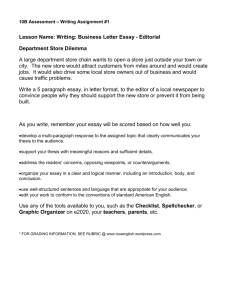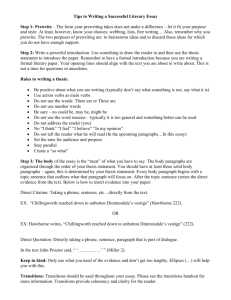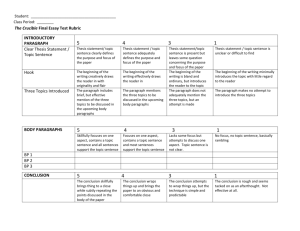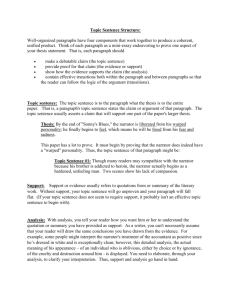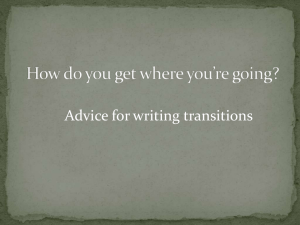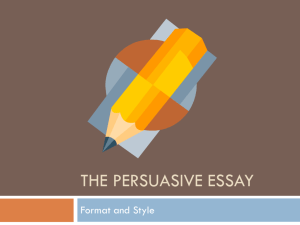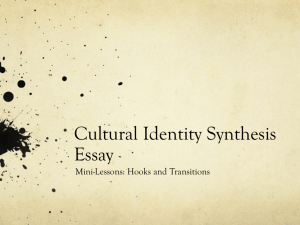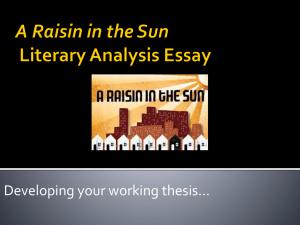Definition Essay – Rubric Self-Edit
advertisement
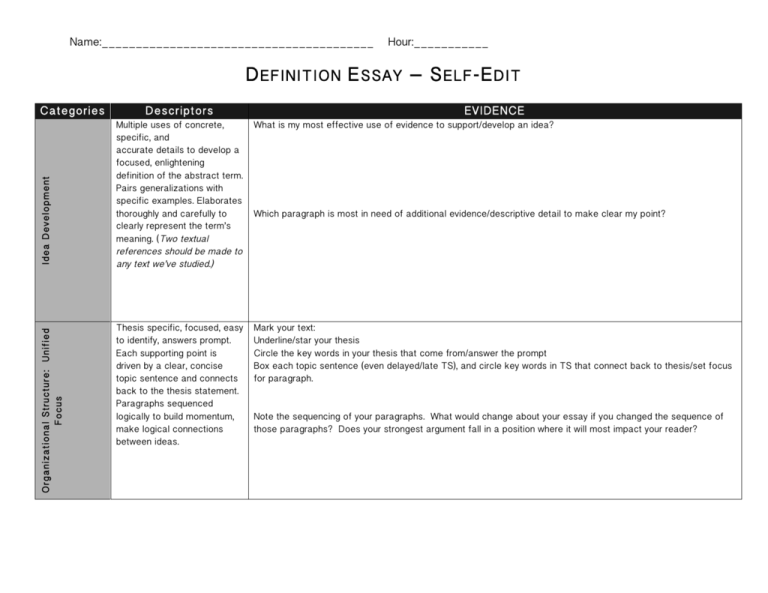
Name:________________________________________ Hour:___________ D EFINITION E SSAY – S ELF -E DIT Organizational Structure: Unified Focus Idea Development Categories Descriptors EVIDENCE Multiple uses of concrete, specific, and accurate details to develop a focused, enlightening definition of the abstract term. Pairs generalizations with specific examples. Elaborates thoroughly and carefully to clearly represent the term’s meaning. (Two textual references should be made to any text we’ve studied.) What is my most effective use of evidence to support/develop an idea? Thesis specific, focused, easy to identify, answers prompt. Each supporting point is driven by a clear, concise topic sentence and connects back to the thesis statement. Paragraphs sequenced logically to build momentum, make logical connections between ideas. Mark your text: Underline/star your thesis Circle the key words in your thesis that come from/answer the prompt Box each topic sentence (even delayed/late TS), and circle key words in TS that connect back to thesis/set focus for paragraph. Which paragraph is most in need of additional evidence/descriptive detail to make clear my point? Note the sequencing of your paragraphs. What would change about your essay if you changed the sequence of those paragraphs? Does your strongest argument fall in a position where it will most impact your reader? Organizational Structure: Relationship with Reader Transitions used (single word, phrase, repetition) between ideas to create a coherent flow throughout the essay Specific Focus: Definition as pattern of inquiry Author uses introduction to set focus, attract reader’s attention, establish common ground. Sufficient context (rationale/background) given to establish purpose, clarify examples. When necessary, counterarguments addressed. Ideas drawn together to give reader sense of closure, connection beyond the text. Organization al structure: Coherence Name:________________________________________ At least five different aspects of definition used; paragraphs draw upon a variety of example types (description, anecdote, fact/example, etc) to develop ideas. Different ideas fused together to give a clear definition of the term. Hour:___________ What technique do you use to grab your reader’s attention/establish a connection with your reader? What context is necessary for your reader to understand your thesis/argument? Highlight all transitions. Note the number of single word transitions, phrase transitions, and uses of parallelism/repetition to build coherence. Is there any shift in ideas in your essay that is not bridged by a transition? Label the aspects of definition and the different patterns for paragraph development. Do you vary your patterns for paragraph development, or does every paragraph follow the same pattern? Given the chance, would you choose a different pattern – where, and why? Which pattern do you believe you use most effectively? Explain. Name:________________________________________ Word Choice/Diction Implements precise, vivid, natural language through strong verbs and concrete nouns while avoiding intensifiers, overuse of adjectives, and clichés. Words used accurately, reflect mature understanding of language; level of diction appropriate for topic, relationship established with audience. Highlight your top twenty detail words. Don’t have twenty? That’s a sign…. After identifying your weakest and strongest use of descriptive detail, ask yourself: what makes my strong example strong, and how can I apply that strength to my weak example? Conventions Convention use supports accurate, easy reading of author’s work, show careful proofreading on part of author. Hour:___________ TOTAL:


